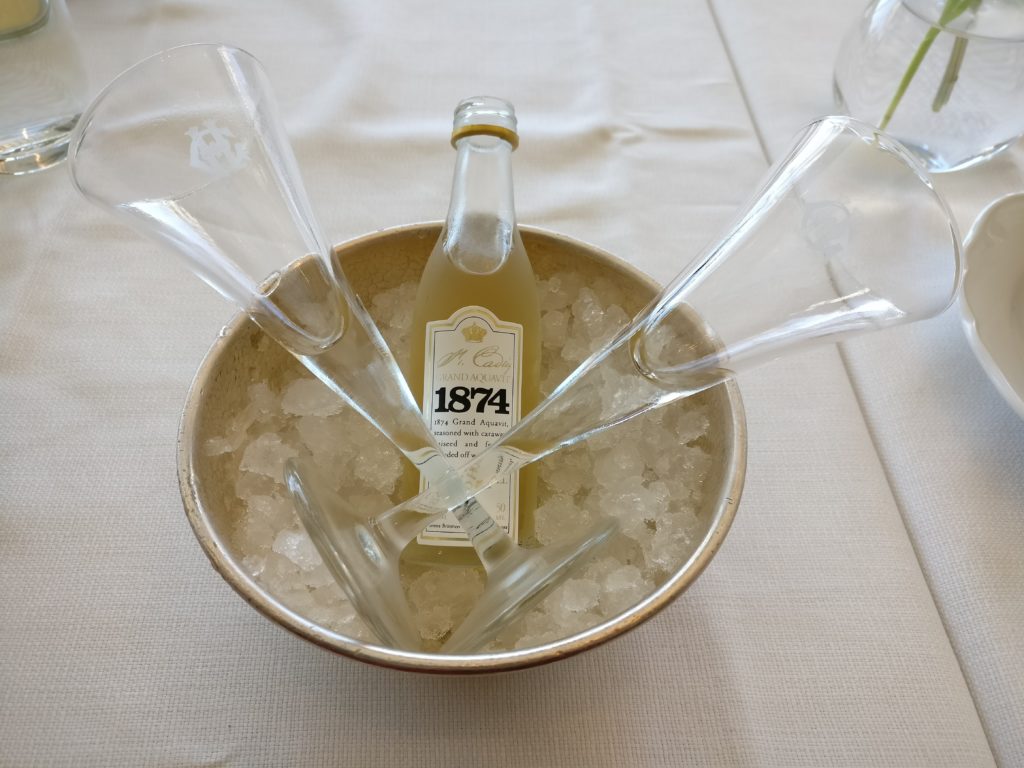
Text and photos by Mary L. Peachin
Vol. 21, No.7,March,2018
Lying in the Baltic Sea archipelago, Stockholm, the capital of Sweden, embraces fourteen islands that are connected by more than fifty bridges. Its setting, with cobblestone streets and earth-colored buildings, make it one of the world’s most beautiful capital cities. The old town of Gamla Stan is home to many 17th century neoclassical buildings in addition to the 13th-century Storkyrkan Cathedral, the Kungliga Slottet Royal Palace and the Nobel Prize Museum. Ferries and sightseeing boats shuttle passengers between the islands.
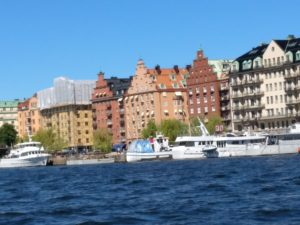 A great way to tour the city is by boat and the most comprehensive tour is Under the 12 Bridges of Stockholm. The two hour tour travels, the Söderström River which connects Södermalm and Gamla Stan. The boat passes through several locks linking Lake Mälaren and the Baltic Sea.
A great way to tour the city is by boat and the most comprehensive tour is Under the 12 Bridges of Stockholm. The two hour tour travels, the Söderström River which connects Södermalm and Gamla Stan. The boat passes through several locks linking Lake Mälaren and the Baltic Sea.
Along the route, the boat passes the inner city, Gamla Stan, the islands Södermalm, Lilla and Stora Essingen, recently built Hammarby Sjöstad and environmentally green Djurgården. At the same time that you are digesting the sights, a bar on board serves Swedish fika (coffee with cinnamon roll), tea, soft drinks and pastries as well as beer, wine, sandwiches and snacks.
Headsets provide history of the city as they point out the prominent Högalid Church the prominent two steeple Södermalm district twin steeple church.
Stortorget is the name of a large square in the center of Gamla Stan. Surrounded by historic merchant houses, it includes the Stockholm Stock Exchange Building. The square was the site of the 1520 Stockholm Bloodbath, the place where Swedish noblemen were massacred by the Danish King Christian II. The following revolt and civil war led to the dissolution of the Kalmar Union and the subsequent election of King Gustav I.
In addition to being a beautiful city, the cuisine, especially for seafood lovers, in unequalled. The Grand Hotels Veranda’s smörgåsbord tops any buffet in the world. Not to be missed is the Grand’s private label 1874 Grand Aquavit, spiced with caraway, anise and fennel. Included in the smörgåsbord are a variety of herring dishes, salmon and gravlax to meatballs with lingonberry jam. Start with the herrings accompanied by mustard, spices, tomato, pickled, lime and wasabi, followed by salmon. Make many trips to the buffet, always taking a clean plate. Salmon dishes include dill cured, hot smoked, beetroot, and poached. There is also hot smoked char, smoked sturgeon, chopped egg, anchovies and onion, cold salads, hot dishes of char, cod, and meatballs with lingonberries followed by divine cheese, and scrumptious desserts. This memorable meal will set you back $64 a person.
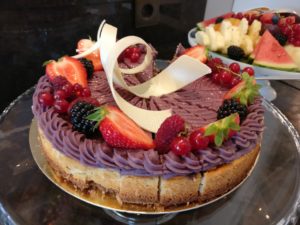 Sturehof Restaurant is a jumping seafood restaurant packed to the brim. Young professionals, men with handkerchiefs in coat pockets. Crab, oysters from Normandy, Canada lobster, shrimp towers. Fish, cod, salmon, char. A place to been seen or people watch.
Sturehof Restaurant is a jumping seafood restaurant packed to the brim. Young professionals, men with handkerchiefs in coat pockets. Crab, oysters from Normandy, Canada lobster, shrimp towers. Fish, cod, salmon, char. A place to been seen or people watch.
The restaurant Den Gyldene Freden, which translates to The Golden Peace, located on Österlånggatan in the old town of Stockholm is one of Sweden’s most well-known restaurants, and opened in 1722 makes it is the oldest restaurant in the world in the same location.
Another popular dining spot is unique Michelin-starred Matbaren restaurant. Casual with shared tables, flat bread is served in a bag, wooden knife are used as a utensil along with wood trays. Dishes include, Swedish squid with trout roe, Jerusalem artichokes, soy, charcoal grilled Onsberga pig, truffle, cabbage, hazelnut, steamed “spicy brisket” bun, Sichuan pepper, shiso, coriander, Green pea samosa with avocado, pink grapefruit, coriander, yuzu. It’s not the usual Michelin experience.
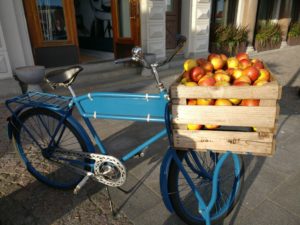 Bernt Notke’s statue of St. George and the Dragon can be found in the Stockholm Cathedral. Riddarholmskyrkan is the royal burial church. In Bollhustäppan, a small courtyard at Slottsbacken, the smallest statues in Sweden, sculptor in 1967, Liss Eriksson created a little boy in wrought iron. The plaque just below the statue says its name “Järnpojken” (“The Iron Boy”). It was created by.
Bernt Notke’s statue of St. George and the Dragon can be found in the Stockholm Cathedral. Riddarholmskyrkan is the royal burial church. In Bollhustäppan, a small courtyard at Slottsbacken, the smallest statues in Sweden, sculptor in 1967, Liss Eriksson created a little boy in wrought iron. The plaque just below the statue says its name “Järnpojken” (“The Iron Boy”). It was created by.
From the mid-19th century to the early-mid 20th century Gamla Stan was considered a slum, many of its historical buildings left in disrepair, and just after World War II, several blocks together five alleys were demolished. Between the 1970s and 80s, the area became gentrified as a tourist attraction offering its charm of medieval and Renaissance architecture. Unfortunately Gamla Stan’s archaeology of the 370 properties remains poorly documented. Current research dates many buildings to the 17th and 18th centuries.
The city’s name of Stockholm, which translates to “Log Island,” originally referred to Gamla Stan. Stockholm now included both the metro and suburban area.
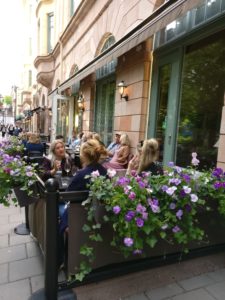 Our several days in Stockholm covered a lot of ground thanks to the expertise and help of Concierge Sean Naughton, a member of the elite Les Clefs d’or.
Our several days in Stockholm covered a lot of ground thanks to the expertise and help of Concierge Sean Naughton, a member of the elite Les Clefs d’or.
Maryigot’s Rival Hotel is cozy and colorful. Small rooms have steel doors to block hall noise. Bathrooms have heated floors with walk in showers. The fourth floor offers computers, ice water and an espresso machine. The staff oozes hospitality. Sean advised to only book Stockholm and Kirir cab. We were advised not to hail a taxi on the street.
In the neighborhood south of Folkungagatan or Sofo is Urban Deli. The gourmet store has multiple beer bars, groceries, and an outdoor cafe where locals arrive early then stand in line for street side dining.
Stockholm’s island of Mariatorget is centered on a square and city park area. The Rival was formerly a movie theater is partly owned by ABBA star Benny Andersson. Its colorful design, blended with art deco, silky sheets, DVDs, outlets for device plus a Bistro and restaurant add to the services offered by Sean the concierge.
Unfortunately, we were traveling through Scandinavia. Stockholm is not a city to be rushed, Instead, take your time and enjoyed its beauty, culture and cuisine.
